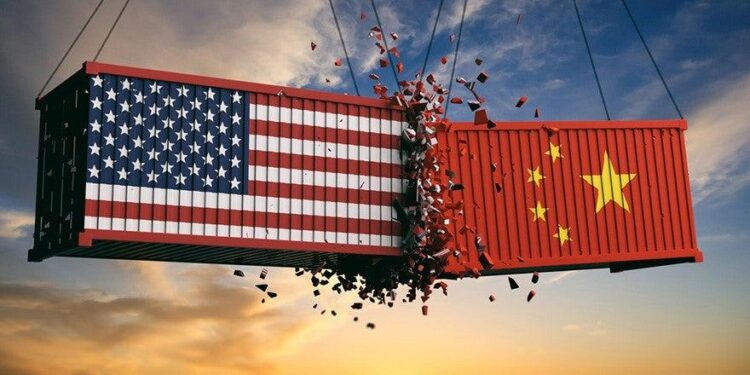As tensions escalate between the United States and its global trading partners, Norway finds itself facing the potential fallout from a looming trade war. Recent announcements of increased tariffs by the U.S. government have raised concerns across Norwegian industries, particularly in sectors reliant on exports to American markets. This article examines what the new tariffs could mean for Norway’s economy, the challenges ahead for exporters, and the strategies being considered to mitigate potential impacts.
Trade War with the USA Looms How New Tariffs Threaten Norwegian Exports
Norway faces a new economic challenge as the United States announces a series of tariffs targeting key sectors, potentially derailing trade relations that have long benefited Scandinavian exporters. The imposition of higher duties on seafood, machinery, and aluminum products could significantly impact Norwegian businesses, many of which rely heavily on the American market. Analysts warn that the tariffs may lead to reduced demand, price volatility, and supply chain disruptions, pressuring companies to either absorb costs or seek alternative markets.
Key sectors at risk include:
- Seafood exports, particularly salmon and cod
- Metals, including aluminum and steel products
- High-tech machinery and equipment
| Sector | Projected Tariff Increase | Estimated Export Value (2023) |
|---|---|---|
| Seafood | 15% | ‚ā¨1.2 billion |
| Aluminum | 10% | ‚ā¨750 million |
| Machinery | 12% | ‚ā¨500 million |
Norwegian exporters are now evaluating strategic responses such as diversifying markets and lobbying for exemptions. Meanwhile, trade experts emphasize the importance of diplomacy to avoid a full-scale trade conflict that could hamper growth not only for Norway but for the entire European economic landscape.
Assessing Economic Impact What Sectors in Norway Face the Greatest Risks
Norway’s export-driven economy faces considerable uncertainty as multiple sectors brace for potential fallout from the looming trade war with the USA. The maritime and energy industries, cornerstones of Norway’s GDP, are particularly vulnerable. Increased tariffs on steel and aluminum could disrupt crucial supply chains and raise production costs for Norwegian shipbuilders. Meanwhile, the energy sector risks losing competitiveness in the lucrative American market, where there is already fierce competition from alternative energy suppliers amid rising tariffs.
Other high-risk sectors include:
- Agriculture: With the U.S. imposing tariffs on certain food products, Norwegian exporters of seafood and processed foods could face diminished demand and elevated prices.
- Technology and manufacturing: Dependence on American components and machinery might increase import costs, affecting profitability and innovation cycles.
| Sector | Primary Risk | Potential Impact |
|---|---|---|
| Maritime | Increased steel tariffs | Rising production costs, supply chain delays |
| Energy | Reduced demand for exports | Lower revenues, market share loss |
| Agriculture | Tariffs on food exports | Price hikes, export volume decline |
| Technology | Increased machinery costs | Profitability squeeze, slowed growth |
Strategic Responses How Norwegian Businesses Can Navigate Emerging Trade Barriers
Norwegian companies must adopt proactive and flexible strategies to cushion the impact of rising trade barriers from the USA. Diversifying export markets beyond the American economy can reduce dependency and shield businesses from sudden tariff hikes. Additionally, investing in innovation and value-added production helps enhance competitiveness, allowing firms to command higher prices that offset increased costs. Forming strategic alliances within the EU and other free trade areas can also facilitate smoother access to alternative markets and supply chains.
To better understand the shifting landscape, businesses should closely monitor tariff schedules and regulatory changes, leveraging digital tools for real-time intelligence. Key recommended actions include:
- Reassessing supply chains to identify vulnerabilities and opportunities for localization
- Engaging with industry associations to influence policy and gain early warnings
- Enhancing logistics and customs compliance to minimize delays and extra costs
| Strategy | Benefit | Example |
|---|---|---|
| Market Diversification | Reduces risk exposure | Shift exports towards Asia and EU |
| Value-Added Production | Improves pricing power | Develop premium seafood products |
| Supply Chain Localization | Minimizes cross-border costs | Partner with Nordic suppliers |
Wrapping Up
As tensions escalate with the prospect of a renewed trade war involving the United States, Norway finds itself at a critical crossroads. The introduction of new tariffs threatens to disrupt established trade flows, particularly impacting key industries such as seafood and manufacturing. While Norwegian businesses and policymakers assess the potential fallout, the coming months will be pivotal in determining how the nation navigates these challenges. Staying informed and adaptable will be essential as Norway seeks to safeguard its economic interests amid an increasingly uncertain global trade landscape.
















